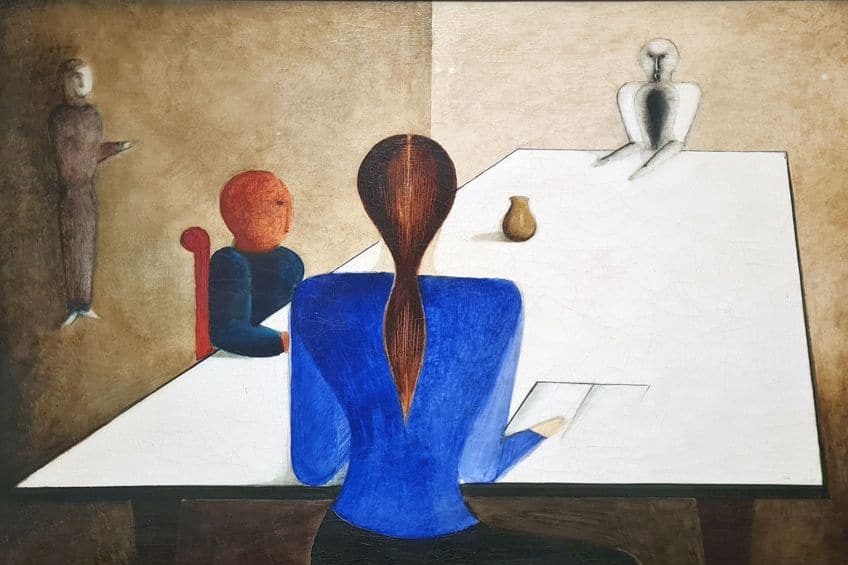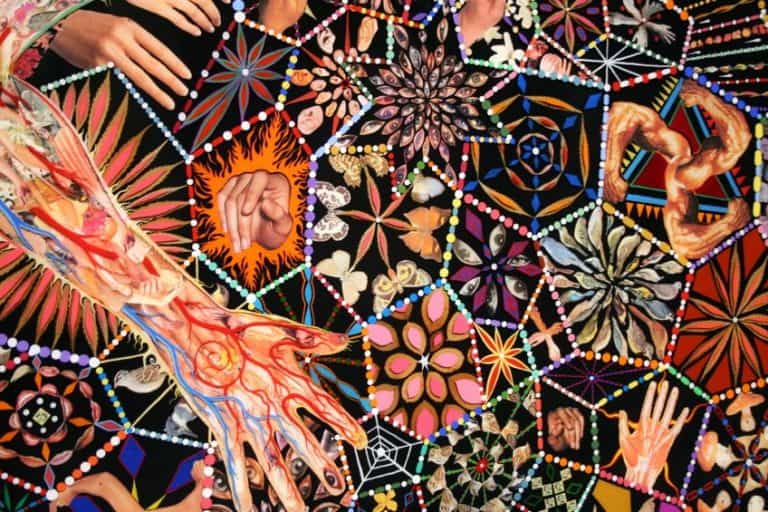Oskar Schlemmer – Discover the Pioneering Bauhaus Creative
Oskar Schlemmer, a pioneering figure in 20th-century art, is best known for his significant contributions to the Bauhaus movement. Born in Germany in 1888, Schlemmer’s work spans across painting, sculpture, choreography, and stage design, embodying a unique fusion of avant-garde ideas and traditional craftsmanship. His iconic Triadic Ballet, with its geometric costumes and abstract choreography, remains a hallmark of his innovative approach to art and performance. Schlemmer’s legacy endures as a visionary who bridged the worlds of visual art and theatrical expression, influencing generations of artists and designers with his revolutionary ideas.
Table of Contents
Key Takeaways
- Oskar Schlemmer was an influential figure in modern art, recognized for his work as a painter and a choreographer at the Bauhaus.
- His multidisciplinary talents were emblematic of the Bauhaus, with the Triadisches Ballett as a notable contribution to modern theatre and performance art.
- Schlemmer’s approach to the human figure and his integration of form and space in his art left a lasting impact on the visual and performing arts.
Life and Education
| Birth | September 4, 1888 |
| Death | April 13, 1943 |
| Place of Birth | Stuttgart, German Empire |
| Genre of Work | Painting, sculpture, designer, and choreographer |
Oskar Schlemmer, a notable German painter, sculptor, designer, and choreographer, played a significant role in the development of modern art. Schlemmer is perhaps best remembered for his association with the influential Bauhaus school. This association not only highlights his diverse talents but also reflects the multidisciplinary spirit of the Bauhaus, which aimed to blur the boundaries between fine art, applied art, and design.
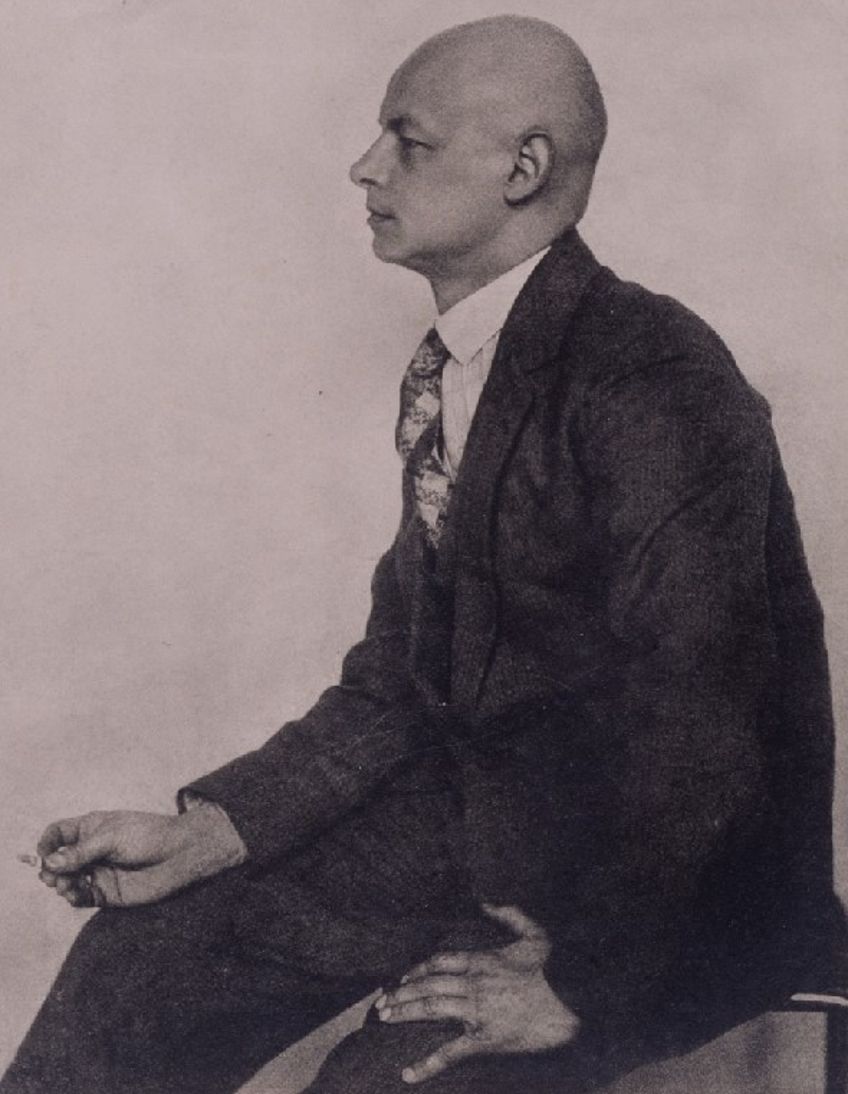
During his tenure at the Bauhaus, starting in 1923, Schlemmer made remarkable strides in theatre, where he infused his deep interest in form and movement. He became the Master of Form at the Bauhaus theatre workshop, where his most renowned work, the Triadisches Ballett (Triadic Ballet), materialized. This work exemplifies his revolutionary approach to performance, integrating costume and stage design to extend the boundaries of ballet.
Schlemmer’s artistic style is distinguished by a focus on the abstraction of the human figure, coupled with a precise and systematic arrangement of form and space. His legacy in both visual and performing arts continues to be celebrated for its profound impact on modern art and theatre. His explorations of the relationship between body and space provided a new framework for understanding the human form in art and beyond.
Early Years and Family
Oskar Schlemmer was born on September 4, 1888, in Stuttgart, Germany, into the family of Carl Leonhard Schlemmer and Mina Neuhaus. Oskar was among the youngest in a large family.
His father passed away when Oskar was just two years old, leading to a challenging childhood with economic hardships.
Formative Artistic Influences
The young Schlemmer was influenced significantly by his hometown’s cultural scene. He apprenticed with a marquetry workshop, which instilled in him a deep appreciation for craftsmanship and design. Key encounters with established artists, including Christian Landenberger and Friedrich von Keller, expanded his early exposure to painting and the arts.

Academic Pursuits
In 1906, Schlemmer enrolled at the Stuttgart Akademie der Bildenden Künste. There, he met and studied under renowned artists like Adolf Hölzel and Willi Baumeister.
Hölzel, in particular, left a lasting impact on Schlemmer through his innovative approaches to color theory and composition.
Mature Period
After his studies, Schlemmer advanced his artistic techniques and developed his unique style, marked by a blend of abstract forms and precise representations of the human body. It was during this period that he began to establish himself as a major figure in the art world, merging his interests in sculpture, painting, and theater.

Late Period and Death
Schlemmer’s late career was overshadowed by the political situation in Germany, which affected the cultural and artistic freedoms he once enjoyed. Despite these challenges, he continued to contribute to the arts until his death on April 13, 1943, in Baden-Baden.
Leaving an indelible mark on the art world, his legacy is inextricably linked to Bauhaus teachings and modernist ideals.
Bauhaus Era and Theatrical Work
Oskar Schlemmer made a significant impact at the Bauhaus School, particularly in the realms of theatre and performance, combining his expertise in design with groundbreaking explorations in dance and costume.

Joining Bauhaus
Schlemmer joined the Bauhaus School in 1920, starting off in the mural painting workshop before Walter Gropius, the founder of the Bauhaus, appointed him as Master of Form at the Bauhaus theatre workshop in 1923.
He worked alongside other influential artists such as Paul Klee, but it was Schlemmer’s visions for the theatre that would cement his legacy in the Bauhaus era.
Bauhaus Theatre and Performance
Schlemmer was integral in the development of the Bauhaus Theatre where he incorporated geometric shapes and designs into theatrical expression. Theatre was a collaborative field at the Bauhaus, combining music, performance, and the visual arts, all of which Schlemmer embraced and innovated upon. His work explored the relationship between the human body and space, a concept which became a central theme in his theatrical productions.

The Triadic Ballet
The Triadic Ballet (Triadisches Ballett in German), which Schlemmer created in 1922, was a revolutionary work that featured dancers in abstract costumes made of geometric shapes, illustrating his dedication to exploring the boundaries between humans and geometry. These costumes transformed human dancers into figurative spheres and other shapes, contributing to a unique performance that became emblematic of Bauhaus design principles in the context of dance and performance. The ballet premiered in Stuttgart and was later performed in Weimar and Baden-Baden, receiving critical acclaim and becoming a highlight of Schlemmer’s career.
The music for the ballet was composed by Paul Hindemith, reinforcing the Bauhaus School’s multidisciplinary approach.
Important Artworks by Oskar Schlemmer
Oskar Schlemmer, a multifaceted German artist, is renowned for his versatile contributions to the Bauhaus movement. His work spans across painting, sculpture, and set design. Two of his most significant works stand out for their groundbreaking approaches to the representation of the human body and the synergy of art and performance.
- Triadisches Ballett (Triadic Ballet): Known for transforming actors into geometric abstractions through avant-garde costumes and movement, this piece is Schlemmer’s most famous work. It epitomizes his exploration of the relationship between body and space, which he performed in 1922, revolutionizing ballet aesthetics.
- Figurinen zum Triadischen Ballett: In conjunction with his iconic ballet, Schlemmer’s sketches and sculptures of the ballet’s costumes further illustrate his commitment to geometric forms. These designs demonstrate a unique blend of artistic vision and practical implementation in stagecraft.
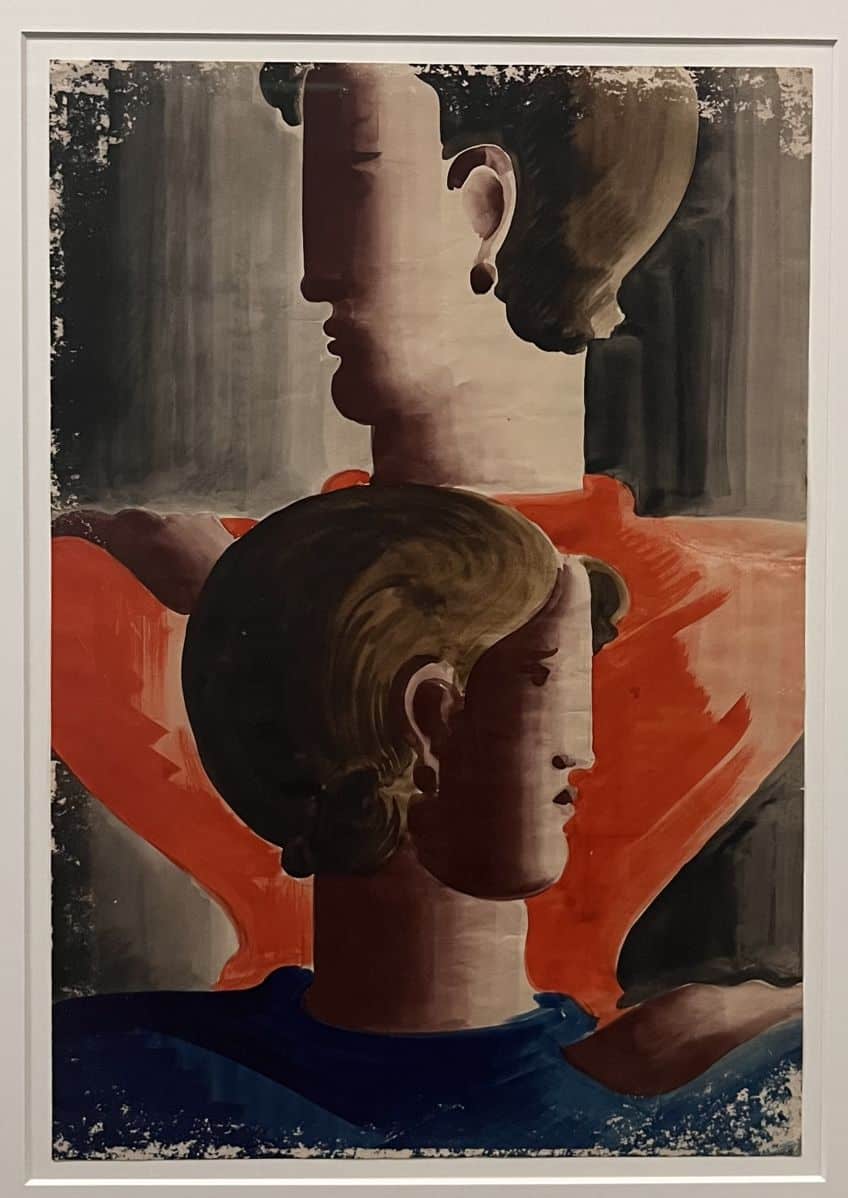
Additionally, Schlemmer made significant strides in the visual arts with innovative reliefs and paintings:
- Relief H-6 PA (1919): This artwork captures the intermediary state between two-dimensional painting and three-dimensional sculpture. Exhibiting influences from Cubism, it dissects the human figure into geometric shapes, allowing for multiple interpretations by the viewer.
- Bauhaus Stairway (1932): This painting recalls Schlemmer’s years at the Bauhaus, showcasing figures ascending a staircase, simplified yet expressive in form, emphasizing the school’s blend of functionality and art.
Each work contributed to Schlemmer’s enduring legacy, not only through their visual impact but also through the theories of art and design he developed alongside them.
These works remain influential in the study of modernism and performance art.
Artistic Style and Philosophy
Oskar Schlemmer is renowned for his integration of geometric abstraction and figura representation, particularly in relation to the human body and space. His artistic philosophy centered around the harmonization of the human figure within the egocentric space lines, bridging the gap between art and life.

Sculpture and Painting
Schlemmer’s sculptural work often depicted the human form through a simplified, abstract approach. He focused on the physical structure of his subjects, reducing them to their most essential shapes and forms. His paintings followed a similar vein, with an emphasis on form and the representation of the human body within a structured, often geometric space.
This exploration of the figure in space was a central theme of Schlemmer’s artistic endeavors.
Cubism and Abstract Art
As an abstract artist, Schlemmer was influenced by Cubism and its deconstruction of perspective. He applied a cubist understanding to his work, dissecting the human form into a series of planes and angles. His interest lay in portraying the body as an abstraction, communicating through a language of shape and line that echoed an architectural understanding of space. He employed egocentric space lines to arrange his forms, emphasizing the relation between the figure and the encompassing environment.

Artistic Accomplishments
Schlemmer’s contribution to art was multi-faceted, encompassing paintings, sculpture, and theatrical design. He was a visionary in pioneering the concept of Gesamtkunstwerk or ‘total work of art’, where multiple art forms are merged. His employment at the Bauhaus as Master of Form for the theatre workshop epitomized this, as he synchronized color, form, and movement.
Schlemmer’s Triadisches Ballett (Triadic Ballet) is a prime example, where he transformed actors into living, moving sculptures, thus creating a new abstracted reality of the human form in performance.
Legacy and Impact
Oskar Schlemmer is remembered for his pioneering role in the avant-garde movement and his significant contributions to modern art, which reverberate in the art world to this day.
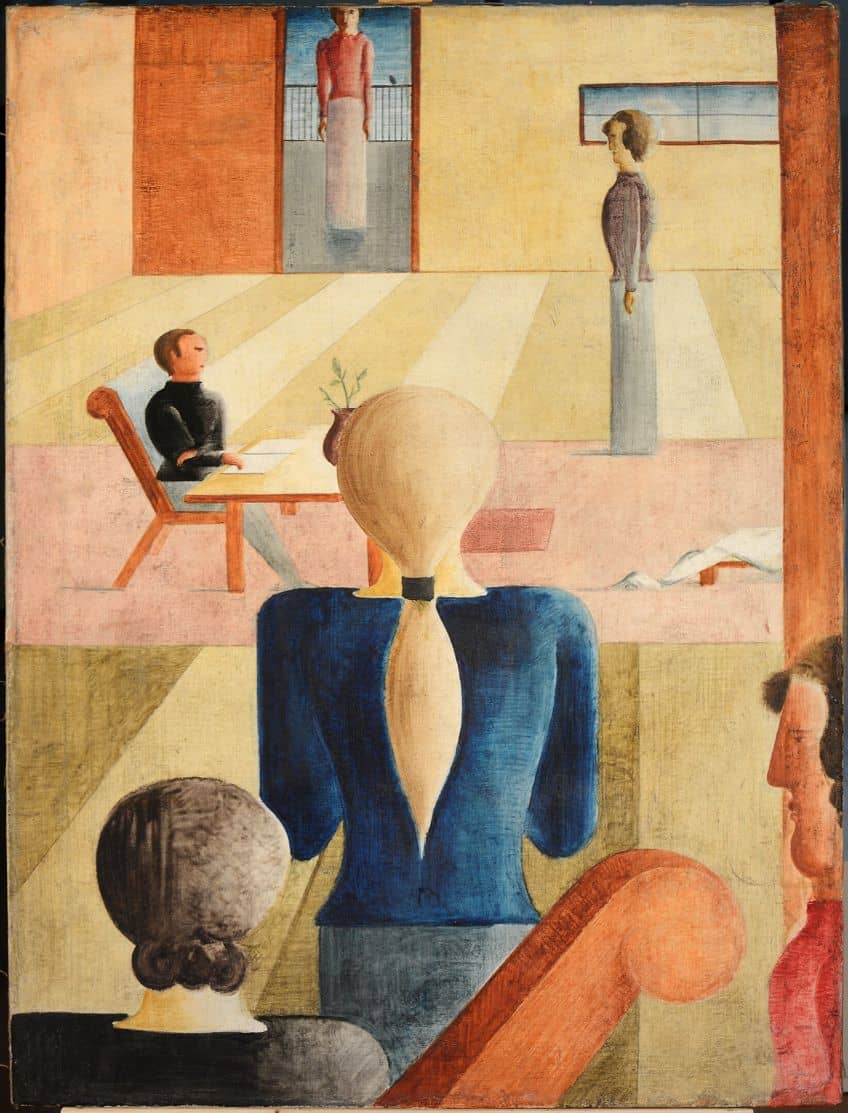
Challenges and Controversies
During the ascension of the Nazi regime, Schlemmer faced significant challenges. His avant-garde style and philosophical beliefs were in direct conflict with the Nazis’ conservative cultural policies. They branded his works as “Degenerate Art”, and he was forced to paint murals in a lacquer factory to subsist.
His famous work, Bauhaustreppe (Bauhaus Stairway), became a poignant symbol of Nazi suppression of modern art.
Influence and Contributions
Schlemmer’s influence extended to a diverse range of art forms including painting, sculpture, and performance. As a German artist and choreographer, his work was akin to a Master of Form, exploring spatial relations and human movement, reflected in his avant-garde piece, The Triadic Ballet. This performer-centric ballet modernized the perception of the human body in art. Notably, Schlemmer’s legacy at the Bauhaus, where he taught alongside masters like Wassily Kandinsky, left an indelible mark on the Bauhaus’s ethos of blending different art disciplines.

Legacy of Oskar Schlemmer Today
His lasting legacy can be seen in institutions like the Museum of Modern Art, which exhibits pieces reminiscent of his belief in the synthesis of art and craftsmanship. Schlemmer’s diaries and theoretical writings continue to resonate with artists, influencing works that interweave the avant-garde ideals with contemporary culture. His roots in Swabia and education at the Stuttgart Academy of Fine Art are often celebrated for their roles in shaping his innovative approach to art that strived to harmonize form and function. Today, Schlemmer is celebrated as a visionary who sought to modernize not only art but the role of the artist as an active performer in the transformation of society.
Oskar Schlemmer’s artistic legacy continues to inspire and captivate audiences around the world. His groundbreaking contributions to the Bauhaus movement, innovative approach to geometric abstraction, and pioneering work in performance art and stage design cement his place as a visionary of modern art. Schlemmer’s ability to blend avant-garde concepts with traditional craftsmanship, as seen in his iconic Triadic Ballet and other works, underscores his enduring influence on contemporary art and design. As we reflect on his rich body of work, Schlemmer’s legacy serves as a testament to the power of creativity, experimentation, and imagination in shaping the artistic landscape of the 20th century and beyond.
Frequently Asked Questions
What Are the Distinctive Features of the Triadic Ballet Created by Oskar Schlemmer?
Oskar Schlemmer’s Triadic Ballet is renowned for its abstract costumes and choreography. The ballet consists of three parts, symbolizing three themes in three colors. The performers are transformed into geometric figures, bringing a unique blend of visual art and movement to the stage, which reflects the Bauhaus school’s fusion of different art forms.
How Has Oskar Schlemmer’s Artwork Influenced Modern Art?
Oskar Schlemmer’s influence on modern art resonates in the way artists perceive the relationship between the body and space. His work in sculptural form, stage design, and his theories on the human figure as an artistic medium have inspired subsequent generations of artists to explore the intersection of art, space, and human form in innovative ways.
In What Ways Did Oskar Schlemmer Contribute to the Bauhaus Movement?
As a Master of Form at the Bauhaus’ theatre workshop, Schlemmer played a significant role in developing the school’s stage workshop, emphasizing the unity of all arts. His teachings and works embodied the Bauhaus ethos of integrating art, craft, and technology, and he significantly impacted the school’s approach to theater, costume design, and the overall aesthetic of performance art.
Isabella studied at the University of Cape Town in South Africa and graduated with a Bachelor of Arts majoring in English Literature & Language and Psychology. Throughout her undergraduate years, she took Art History as an additional subject and absolutely loved it. Building on from her art history knowledge that began in high school, art has always been a particular area of fascination for her. From learning about artworks previously unknown to her, or sharpening her existing understanding of specific works, the ability to continue learning within this interesting sphere excites her greatly.
Her focal points of interest in art history encompass profiling specific artists and art movements, as it is these areas where she is able to really dig deep into the rich narrative of the art world. Additionally, she particularly enjoys exploring the different artistic styles of the 20th century, as well as the important impact that female artists have had on the development of art history.
Learn more about Isabella Meyer and the Art in Context Team.
Cite this Article
Isabella, Meyer, “Oskar Schlemmer – Discover the Pioneering Bauhaus Creative.” Art in Context. May 20, 2024. URL: https://artincontext.org/oskar-schlemmer/
Meyer, I. (2024, 20 May). Oskar Schlemmer – Discover the Pioneering Bauhaus Creative. Art in Context. https://artincontext.org/oskar-schlemmer/
Meyer, Isabella. “Oskar Schlemmer – Discover the Pioneering Bauhaus Creative.” Art in Context, May 20, 2024. https://artincontext.org/oskar-schlemmer/.


